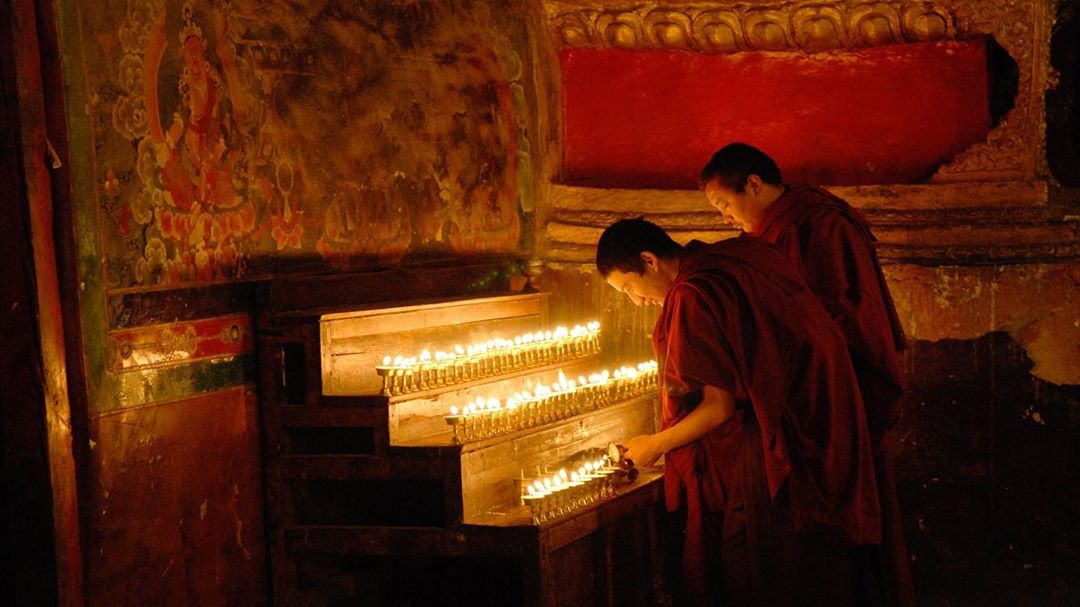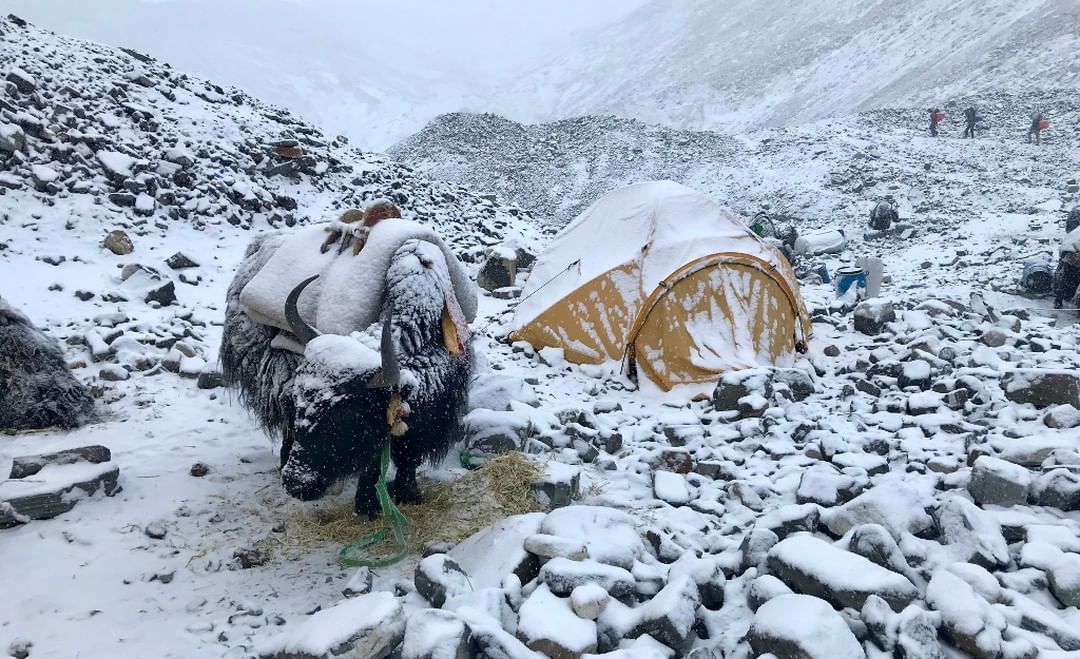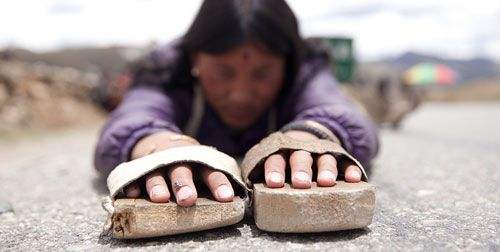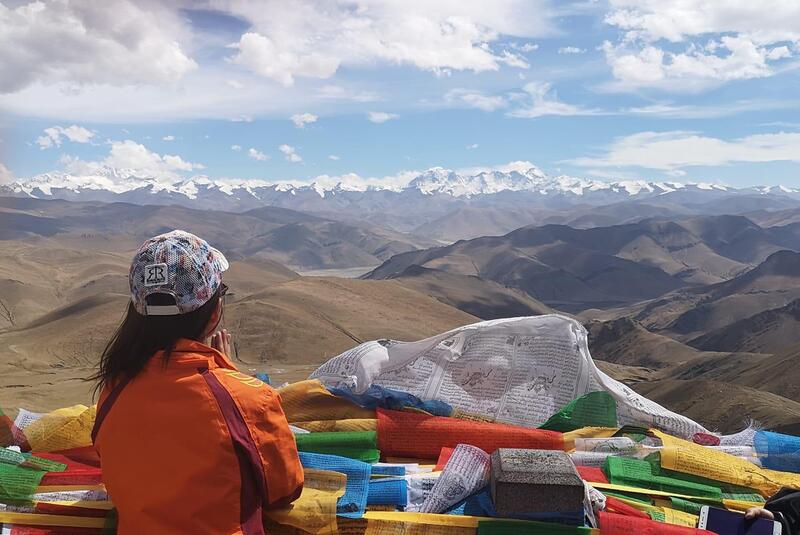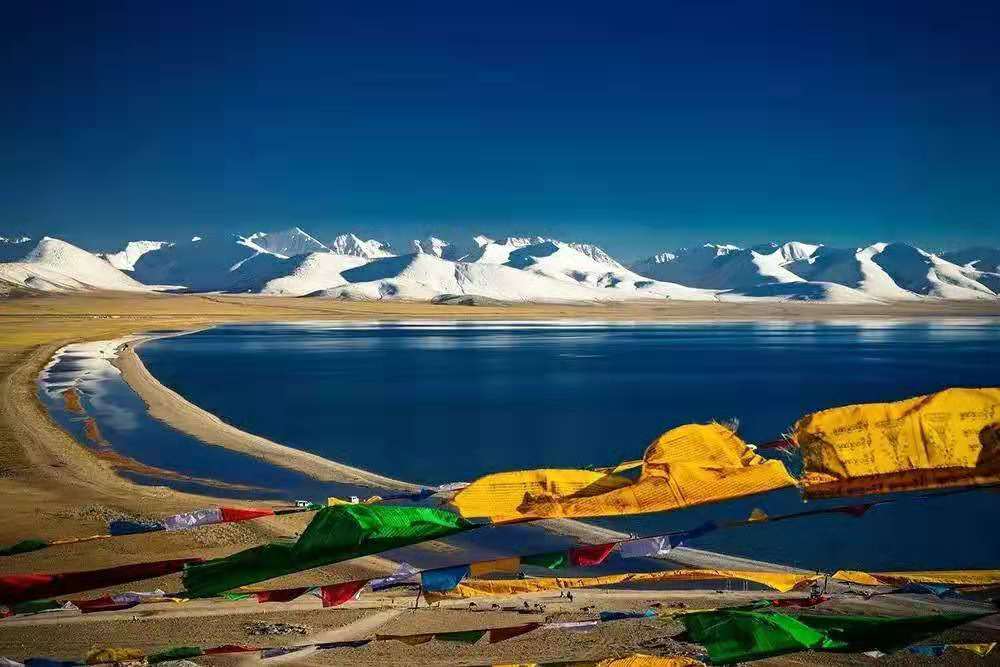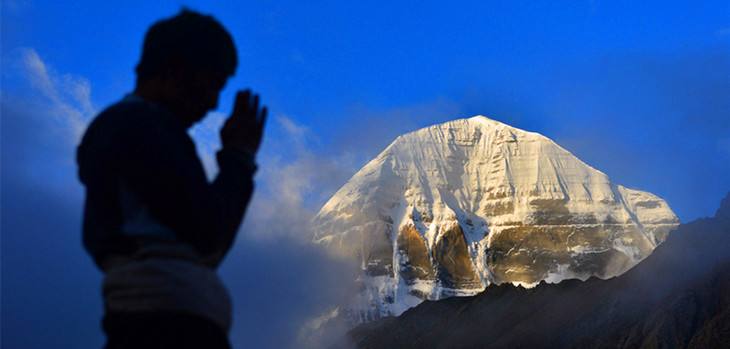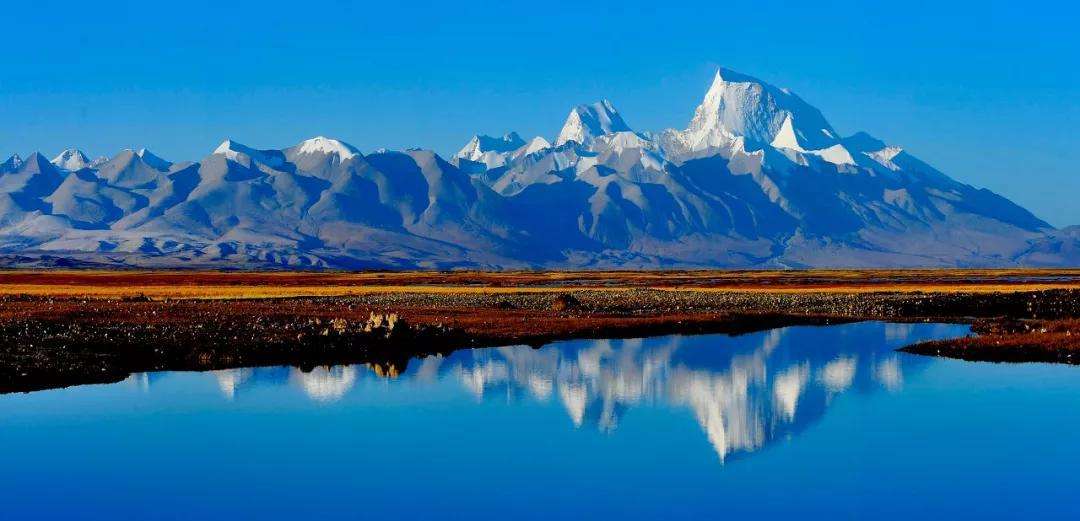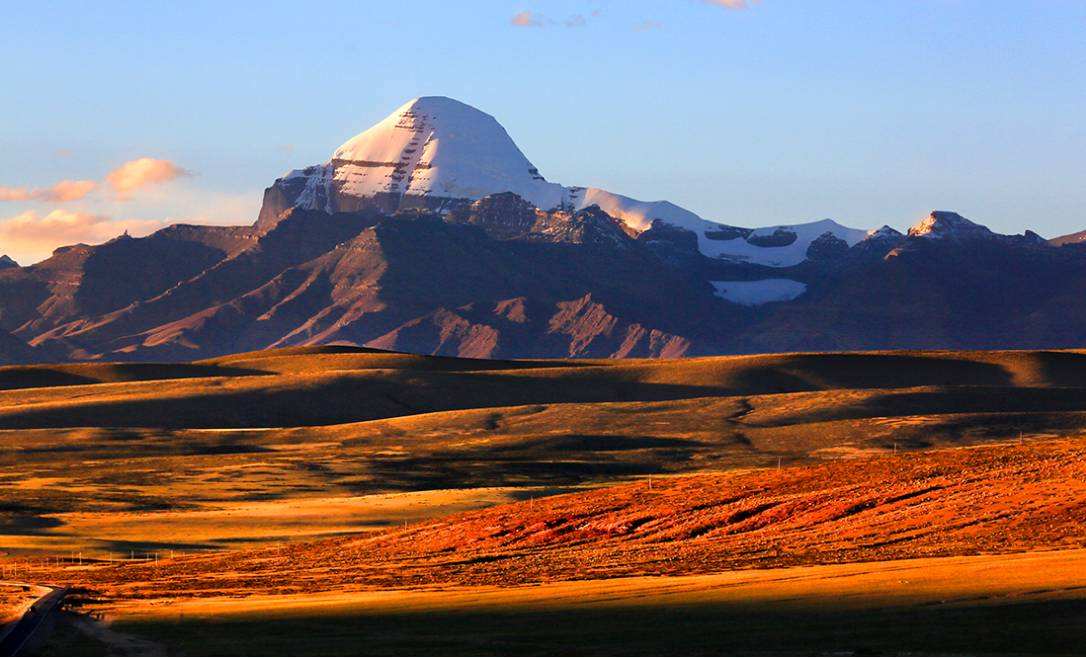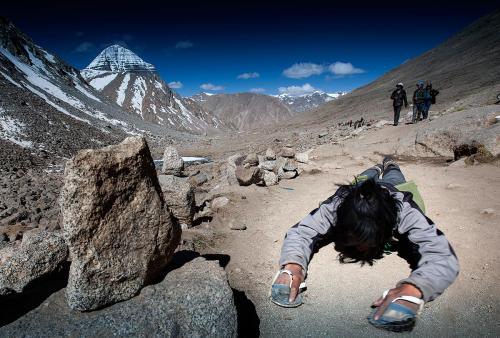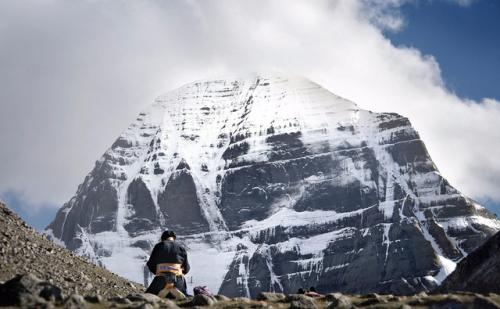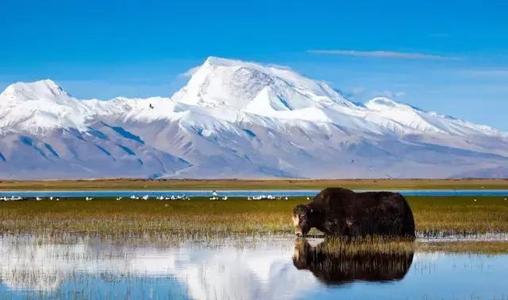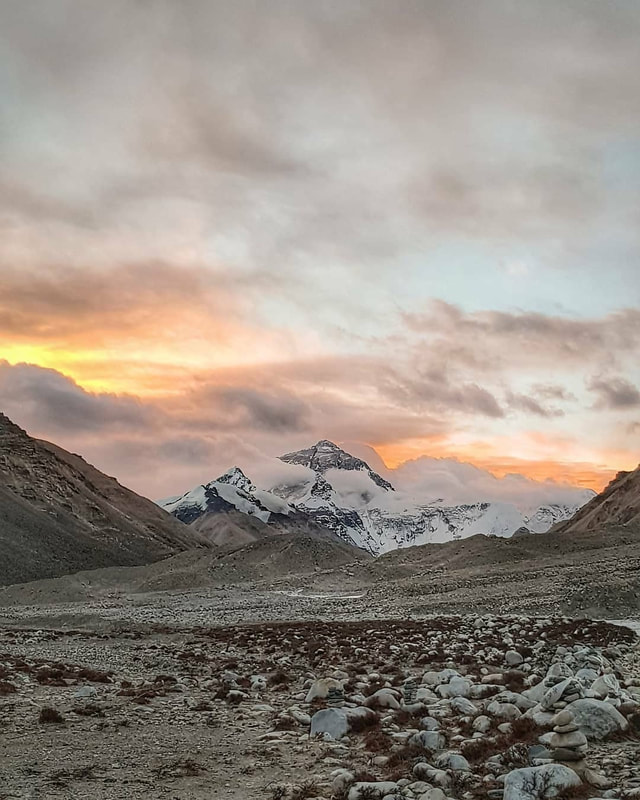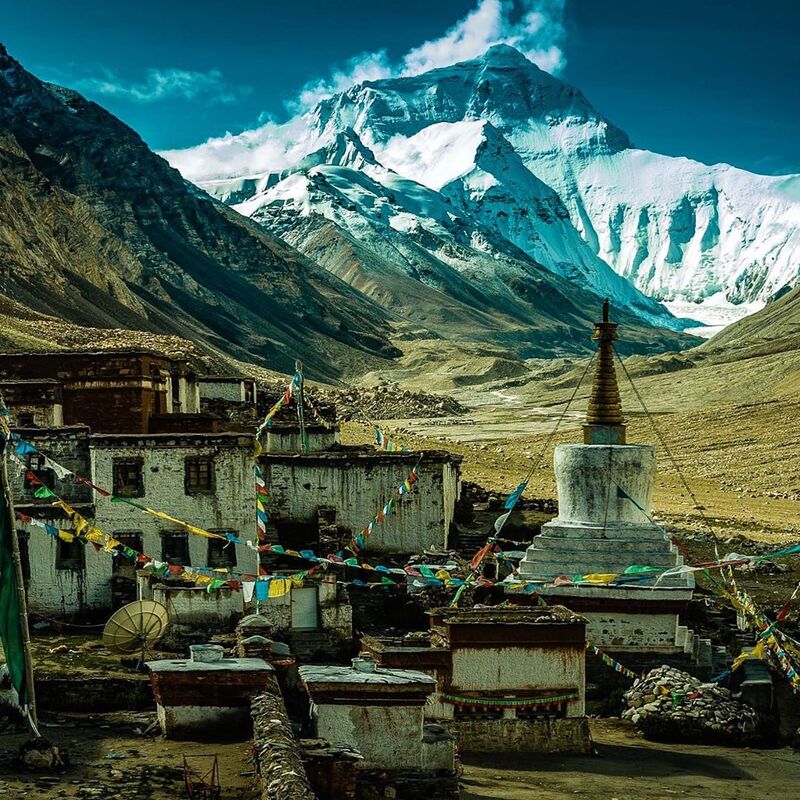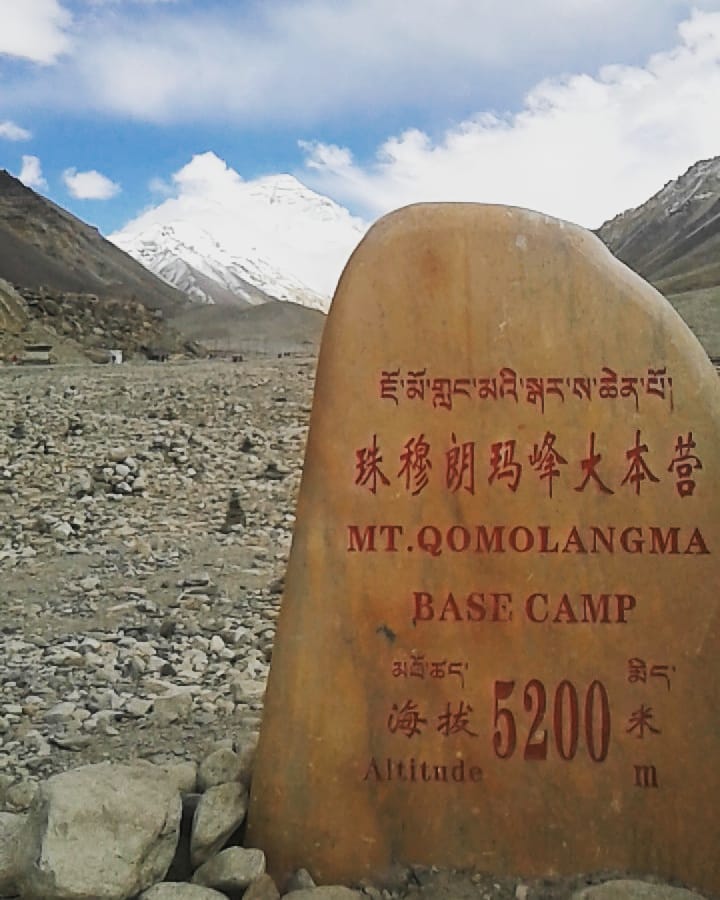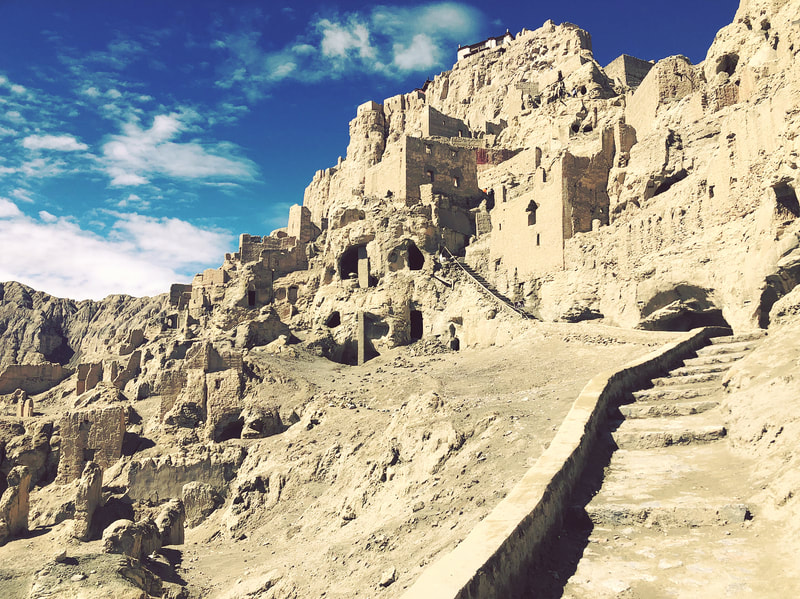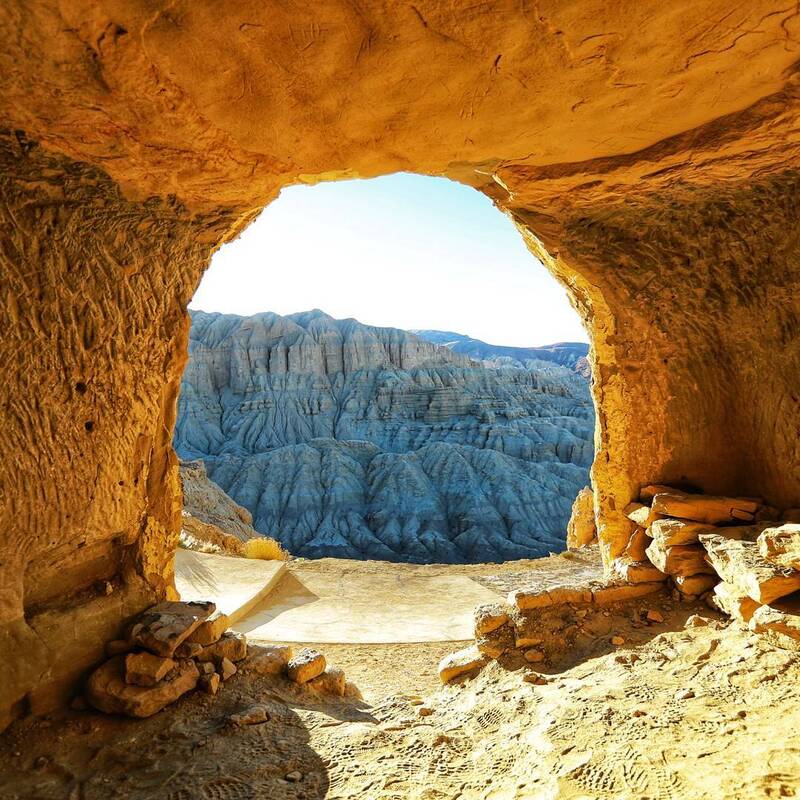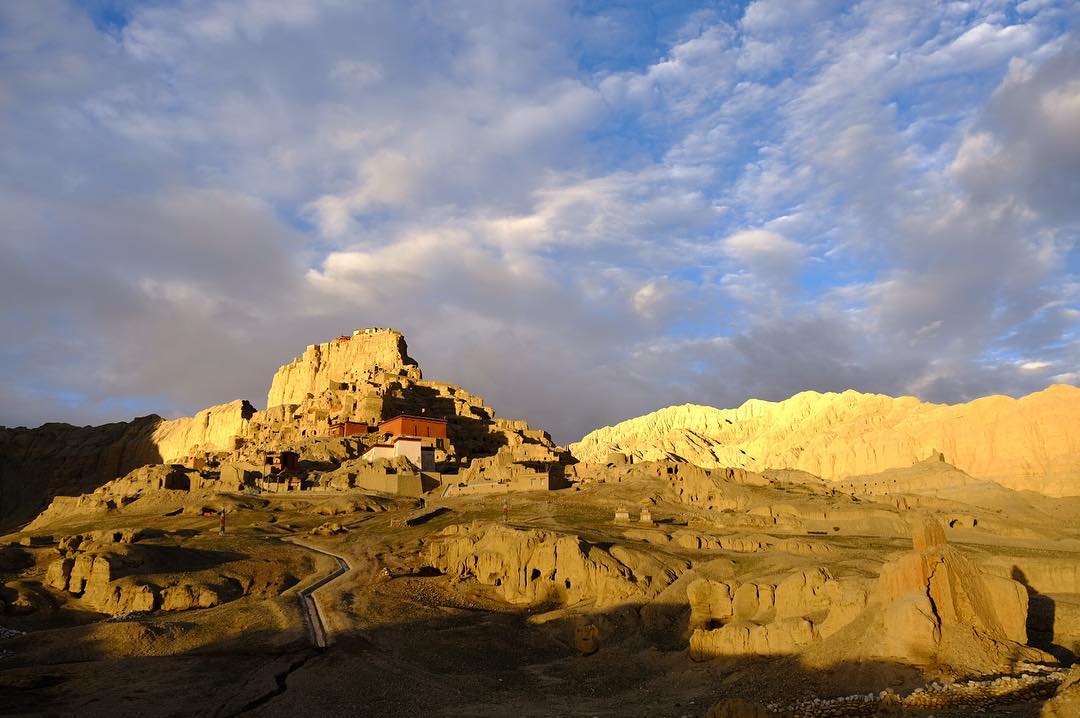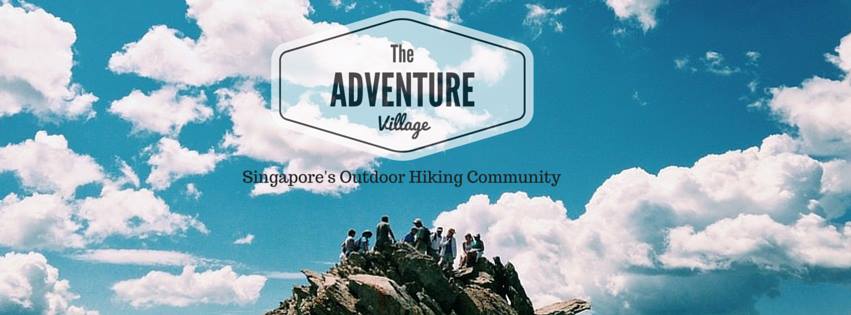This centre of heaven
This core of the earth
This heart of the world
Fenced round with snow
The headland of all rivers
Where the mountains are high
And the land is pure
~ Tibetan poem, 8th century
བཀྲ་ཤིས་བདེ་ལགས།།
Tibet, in southwest China, captivates with its grand natural scenery, vast plateau landscape, holy mountains, sacred lakes, ancient architecture, and unique folk cultures. Situated on the Qinghai-Tibet Plateau, known as the "roof of the world," Tibet is a photographer's paradise and a sought-after destination for both Chinese and international visitors.
Tibet stands as a profoundly spiritual destination, where moments of tranquility, with everything in its rightful place, unfold more frequently. Tibet truly elevates the spirit, existing on a higher plane of serenity and contemplation, whether through the unwavering devotion of a Tibetan pilgrim or the awe-inspiring vastness of its landscapes.
Tibet, in southwest China, captivates with its grand natural scenery, vast plateau landscape, holy mountains, sacred lakes, ancient architecture, and unique folk cultures. Situated on the Qinghai-Tibet Plateau, known as the "roof of the world," Tibet is a photographer's paradise and a sought-after destination for both Chinese and international visitors.
Tibet stands as a profoundly spiritual destination, where moments of tranquility, with everything in its rightful place, unfold more frequently. Tibet truly elevates the spirit, existing on a higher plane of serenity and contemplation, whether through the unwavering devotion of a Tibetan pilgrim or the awe-inspiring vastness of its landscapes.
The age-old path around Mt Kailash is one of the world’s great pilgrimage routes and completely encircles Asia’s holiest mountain. With a 5650m pass to conquer, this kora is a test of both the mind and the spirit.
There’s some gorgeous mountain scenery along this trek, including close-ups of the majestic pyramidal Mt Kailash, but just as rewarding is the chance to see and meet your fellow pilgrims, many of whom have travelled hundreds of kilometres on foot to get here. Apart from local Tibetans, there are normally dozens of Hindus on the kora during the main pilgrim season (June to September). Some ride horses, with yak teams carrying their supplies.
The route around Mt Kailash is a simple one: you start by crossing a plain, then head up a wide river valley, climb up and over the 5650m Drölma-la, head down another river valley, and finally cross the original plain to the starting point. It’s a perfect natural circuit and we find out how it has been a pilgrim's favourite for thousands of years. (Lonely Planet)
There’s some gorgeous mountain scenery along this trek, including close-ups of the majestic pyramidal Mt Kailash, but just as rewarding is the chance to see and meet your fellow pilgrims, many of whom have travelled hundreds of kilometres on foot to get here. Apart from local Tibetans, there are normally dozens of Hindus on the kora during the main pilgrim season (June to September). Some ride horses, with yak teams carrying their supplies.
The route around Mt Kailash is a simple one: you start by crossing a plain, then head up a wide river valley, climb up and over the 5650m Drölma-la, head down another river valley, and finally cross the original plain to the starting point. It’s a perfect natural circuit and we find out how it has been a pilgrim's favourite for thousands of years. (Lonely Planet)
A pilgrimage to Mt Kailash involves nothing more or less than making circuits around the sacred mountain. The Outer Pilgrimage Circuit (Chikhor) is about 52 km, and Tibetans can complete a circuit in a day. The majority of pilgrims try for 13 circuits, if they can. Some pilgrims do a circuit performing Kyangcha (Prostration). While the average circuit takes about 14 hours to complete, those doing prostration can take a couple of weeks. Those seeking to secure their path to enlightenment try for 108 circuits. Buddhists and Hindus travel clockwise around the mountain while Bonpos travel counter-clockwise. Most travelers take three days to complete a circuit.
This coming July, join Adventures Unlimited in a once in a lifetime adventure as we traverse the entire Kora around the world's most holy mountain. This journey will change you and you will become a part of it.
This trip is fully tailored made to include visits to the very ruins of the Guge Kingdom 古格遗址 (very seldom offered by mainstream operators).
This coming July, join Adventures Unlimited in a once in a lifetime adventure as we traverse the entire Kora around the world's most holy mountain. This journey will change you and you will become a part of it.
This trip is fully tailored made to include visits to the very ruins of the Guge Kingdom 古格遗址 (very seldom offered by mainstream operators).
Potala Palace
The Potala Palace, winter palace of the Dalai Lama since the 7th century, symbolizes Tibetan Buddhism and its central role in the traditional administration of Tibet. The complex, comprising the White and Red Palaces with their ancillary buildings, is built on Red Mountain in the centre of Lhasa Valley, at an altitude of 3,700m, the highest palace in the world. Also founded in the 7th century, the Jokhang Temple Monastery is an exceptional Buddhist religious complex. Norbulingka, the Dalai Lama's former summer palace, constructed in the 18th century, is a masterpiece of Tibetan art. The beauty and originality of the architecture of these three sites, their rich ornamentation and harmonious integration in a striking landscape, add to their historic and religious interest. It is one of the World Heritage Site since 1994.
Still, the Potala Palace remains an iconic part of the region and a mecca for Buddhists around the world. The name Potala is a nod to a sacred mountain in India, where the Buddha of compassion is said to dwell. Year-round, thousands of religious pilgrims circle the perimeter of the palace with prayer wheels and beads to ask for blessing. Many have traveled thousands of miles by foot just to pay their respects.
The Potala Palace, winter palace of the Dalai Lama since the 7th century, symbolizes Tibetan Buddhism and its central role in the traditional administration of Tibet. The complex, comprising the White and Red Palaces with their ancillary buildings, is built on Red Mountain in the centre of Lhasa Valley, at an altitude of 3,700m, the highest palace in the world. Also founded in the 7th century, the Jokhang Temple Monastery is an exceptional Buddhist religious complex. Norbulingka, the Dalai Lama's former summer palace, constructed in the 18th century, is a masterpiece of Tibetan art. The beauty and originality of the architecture of these three sites, their rich ornamentation and harmonious integration in a striking landscape, add to their historic and religious interest. It is one of the World Heritage Site since 1994.
Still, the Potala Palace remains an iconic part of the region and a mecca for Buddhists around the world. The name Potala is a nod to a sacred mountain in India, where the Buddha of compassion is said to dwell. Year-round, thousands of religious pilgrims circle the perimeter of the palace with prayer wheels and beads to ask for blessing. Many have traveled thousands of miles by foot just to pay their respects.
Yamdrok, Yamdroktso (ཡར་འབྲོག་གཡུ་མཚོ། ), or Yamdrok Yumtso, is a breathtaking lake lying between the Tibetan capital, Lhasa, and the town of Gyantse. Yamdrok Lake is viewable along the old Friendship Highway that links Tibet with Nepal, and is a favorite route for those heading to Everest Base Camp. Sitting at an altitude of 4,441 meters above sea level, the lake is 130 kilometers in length and 70 kilometers in wide at its furthest spot. Yamdrok is the largest inland and freshwater lake on the northern Himalayan range with an average depth of 20 to 40 meters, and the deepest point being 60 meters.
Yamdrok Lake has a unique coral shape with numerous streams feeding it from nearby mountains, hence the locals refer to it as Coral Lake. It is also sometimes called Green Jade Lake for its smooth surface similar to the fine jade, and its gorgeous color hues from the reflection of sunlight.
Mt Qomolangma (Everest) is the world's highest peak at 8,850m.
Standing at 8,848m high, Mount Everest is the world's highest mountain, located at the border between China and Nepal. Some call it "Qomolangma" which means "Mother Goddess of the Earth" in Tibet language. Mt Everest has two base camps: South Base Camp ( 5,364m ) in Nepal and North Base Camp ( 5,150m ) in Tibet.
The highest point of Mt. Everest is covered by white snow all the year around. When the dazzling sunshine on the snow mountain, the peak is just like a white pyramid miraculously transferred by the Goddess. With the thick freely moving clouds and fogs, it looks like as if a flag, with the mast of the peak was swinging, will shroud the peak, which is known as "Flag Cloud".
Standing at 8,848m high, Mount Everest is the world's highest mountain, located at the border between China and Nepal. Some call it "Qomolangma" which means "Mother Goddess of the Earth" in Tibet language. Mt Everest has two base camps: South Base Camp ( 5,364m ) in Nepal and North Base Camp ( 5,150m ) in Tibet.
The highest point of Mt. Everest is covered by white snow all the year around. When the dazzling sunshine on the snow mountain, the peak is just like a white pyramid miraculously transferred by the Goddess. With the thick freely moving clouds and fogs, it looks like as if a flag, with the mast of the peak was swinging, will shroud the peak, which is known as "Flag Cloud".
Ruins of the Guge Kingdom
The ruins of Guge are in what is today Zhada County, Ngari Prefecture, Tibet. Guge is said to be the highest of ancient kingdoms located on the ridge of the Roof of the World, as Tibet is called. Marching westwards to Guge from the Tibetan capital of Lhasa is a long and hard journey that crosses a vast uninhabited desert.
The powerful Guge kingdom ruled over it for over 700 years from the 9th to 17th century. Altogether 16 kings ruled Guge. Yet, historical records reveal little about its rise and sudden demise. It was instead from some letters by western missionaries that people got to know more about the lost empire.
The ruins are the only visible legacy Guge has left behind.The ruins extend from the mid-ridge of a hill 300 m high at its peak and cover an area of 720,000 sq m. It is the second largest ruin in Tibet, after the Potala Palace in Lhasa. Archaeologists have unearthed 445 earthen and wooden structures, 879 caves, 58 blockhouses (a kind of fortification building), four secret tunnels, 28 stupas (traditional pagoda-shaped Buddhist monuments), granaries and weaponry storehouses.
The ruins of Guge are in what is today Zhada County, Ngari Prefecture, Tibet. Guge is said to be the highest of ancient kingdoms located on the ridge of the Roof of the World, as Tibet is called. Marching westwards to Guge from the Tibetan capital of Lhasa is a long and hard journey that crosses a vast uninhabited desert.
The powerful Guge kingdom ruled over it for over 700 years from the 9th to 17th century. Altogether 16 kings ruled Guge. Yet, historical records reveal little about its rise and sudden demise. It was instead from some letters by western missionaries that people got to know more about the lost empire.
The ruins are the only visible legacy Guge has left behind.The ruins extend from the mid-ridge of a hill 300 m high at its peak and cover an area of 720,000 sq m. It is the second largest ruin in Tibet, after the Potala Palace in Lhasa. Archaeologists have unearthed 445 earthen and wooden structures, 879 caves, 58 blockhouses (a kind of fortification building), four secret tunnels, 28 stupas (traditional pagoda-shaped Buddhist monuments), granaries and weaponry storehouses.
Mount Kailash is considered holy by Hindus, Buddhists and Jains. In ancient texts, it is referred to as the center of the world.
Hindus regard the peak as Shiva's symbolic 'Lingam' and worship Mt Kailash, which is the Sanskrit name for the mountain. Bonpos believe the sacred mountain to be the place where the founder of the Bon religion landed when he descended from the sky. Tibetan Buddhists believe Kang Rinpoche, which means Precious Snow Mountain, is a natural mandala representing the Buddhist cosmology on the earth and the Jains believe this is the place where their religion's founder was spiritually awakened.
Hindus regard the peak as Shiva's symbolic 'Lingam' and worship Mt Kailash, which is the Sanskrit name for the mountain. Bonpos believe the sacred mountain to be the place where the founder of the Bon religion landed when he descended from the sky. Tibetan Buddhists believe Kang Rinpoche, which means Precious Snow Mountain, is a natural mandala representing the Buddhist cosmology on the earth and the Jains believe this is the place where their religion's founder was spiritually awakened.
那一世,我轉山轉水轉佛塔呀,不為修來世,只為途中與你相見。" - 六世達賴喇嘛倉央嘉措詩作
到了西藏, 不去阿里, 有点可惜;
去了阿里, 不去轉山, 留下遺憾;
围绕神山转一圈,可以洗清一世的罪孽,
转十圈,可以免受轮回之苦转百圈,今生可以成佛
and many more!
Mt. Kailash Pilgrimage 西藏阿里转山
(20D19N) 11 July 2024 - 30 July 2024
|
Day 1: Flight to Chengdu and overnight in Chengdu Day 2: Flight from Chengdu and Arrival in Lhasa (3650m) Our english-speaking Tibetan guide and driver, will be waiting for us at the airport when we arrive in Lhasa and will take us to your hotel. For the prevention of altitude sickness, it is important to acclimate to the high altitude by drinking plenty of water and getting plenty of rest. Staying at the 3-star Hotel: Yak Hotel |
|
Day 4: Lhasa sightseeing
We will see the Potala Palace, another of the most impressive religious structures in all of Tibet. The fifth Dalai Lama commissioned the construction of the Potala winter palace in the 1700s. In the afternoon, we add more history and culture by visiting the Drepung Monastery and TraGyi Monastery. Overnight: Yak Hotel |
转山不仅仅是一次绕行;它是与群山的神圣对话,是与永恒的无言交流。
The Kora is not just a circumambulation; it is a sacred dialogue with the mountains, a silent conversation with eternity.
|
Day 5: Morning Drive to Tsupu Monastery
Drive 60km west of Lhasa to Tsupu Monastery, the main monastery of Karma Kagyu in Tibet, built over 800 years ago. It was said that the renowned reincarnation of the living Buddhas was initiated in this monastery. Drive to Yangpachen,90km, and visit Yangpachen Shamarpa monastery then back to Lhasa, Yak hotel. Overnight: Yak Hotel |
|
Day 06: Lhasa- Tsedang -Samye 165km
Today we leave Lhasa city and drive along the Tsangpo River to Tsedang. The greatest attraction in the area is Samye monastery, which is believed to be Tibet's first monastery erected between 775 and 779. In the afternoon we visit Yumbulakhang Palace. It is said to be the first building of Tibet as the palace for the first Tibetan king. Overnight: Samye Monastery guest house. |
|
Day 07: Samye -Yamdroktso - Gyantse
Drive to Chimphu monastery then start to hiking to Longchen Cave, Statue of Guru Rinpoche at Samye Chimphu. It takes about 2 hours and thereafter, we head back to Chimphu monastery, the mountain above the monastery of Samye where there are many retreat caves and huts. Then we will have a long drive of 340 km from Samye to Gyanste for about 5 hours. Highlights of the journey is an overlooking view of Yamdrok Lake at 4790m high Kambala Pass. Then drive along the lakeside and stop for great photo opportunities. Arrive Gyangtse in the late afternoon, arriving in Gyangtse and pay a visit to Perkhor Chode monastery in the sunset time. Overnight: Gyangtse hotel |
Tibetan landscapes offer a view of the world as it was before man, and as it will remain after. - Matthieu Ricard
|
Day 8: Gyangtse (3950m) – Shigatse [3900m] - 90km
The adventure begins with a visit to Gyangtse Dzong. We make a stop in the charming town of Gyantse, where we explore the renowned Kumbum Stupa inside the Pelkor Chode Monastery, home to some of the best Tibetan art paintings. We also take in the breathtaking view of the Gyantse Dzong (fortress), which overlooks the valley. The drive today, only 90 km, takes us to the second largest city in Tibet. Shigatse is a laid-back city that provides excellent opportunity for both relaxation and exploration. We will explore the local market and the Tahilhumpo Monastery. Overnight: Manasarovar hotel. |
|
Day 9: Drive to Saga (4600m) - 340km
We will explore the local market and spend some time exploring the busy cobbled lanes twisting around these ancient buildings. Our final destination today is the small town of Saga(340km). We will cover many miles during the day but also encounter alluring river valleys and scattered villages. Overnight: Saga Hotel |
|
Day 10: Saga – Darchen (4560m) - 450km
This morning, we embark on a journey to the semi-nomadic regions of Tibet's far west. The long drive takes us through the vast expanse of the world's biggest and highest plateau, offering breathtaking views of the authentic Tibetan landscapes. Overnight stay in Darchen and to prepare to rent yaks and Horses and we ready ourselves for the upcoming trek. Overnight in a basic hotel: Himalaya Hotel |
The beauty of the Himalayas is beyond words. It is simply breathtaking. - Tenzin Gyatso, 14th Dalai Lama
|
Days 11-13: Mt. Kailash Kora [52Km, altitude 5630m]
We begin the Pilgrimage Kora of Mount Kailash, most sacred mountain in Asia. Tibetans and Hindu people from all over the World come here for religious reasons. Trek to Dira-Puk Monastery [20Km, 5-6h, 4900m] Trek to Zutul Puk Monastery, [18Km, 6-8h, 4790m] - highest 5630m; toughest day Trek to Darchen [14Km, 3-4h, 4670m] Overnight at guesthouse dorm bed without bathroom during trekking (2 nights). Sleeping bag is provided. From Darchen, we drive to Marnasarovar lake for 80km. |
|
Day 14: Guge Kingdom (4670m) - 285km
We embark on a long day drive along a rough road, soaking in the beautiful and unique landscapes that unfold before us. In the vast valley of Sutlej River, you can find ruins of ancient famous Guge kingdom among the remarkable sand-dunes, a number of temples are still intact and contain exquisite murals and decorative motifs, some are dating back more than 10,000 years. In the afternoon, we drive to Zanda town. Overnight: Zanda Hotel. |
- Tibetan landscapes offer a view of the world as it was before man, and as it will remain after. - Matthieu Ricard
|
Day 16: Saga-Pelkutso Lake, Rongbuk/Everest
Today we cross the Bramaputra River and continue our drive through sandy plain enjoying the nomads' herders with their yaks and sheep along the road. We will do a stop to enjoy the stunning view of Pelku Tso Lake on the left and Mt. Shishapangma (8012m) on the right. We drive further along the friendship highway towards to Old Tingri, from there you can see the mighty peaks of Mt. Everest(8844m) and Mt. Cho Oyu(8201m) far in the distance to the south. With 100km drive more, we will reach Rongbuk where the Everest Base Camp located. Enjoy the stunning sunset from our guest house. Overnight: Monastery guest house or Tent guest house. (dorm bed) |
|
Day 17: EBC (5200m) and drive to Shigatse (3900m)
In the morning, we continue to marvel the wonder and soak in the sunrise of Everest Peak, if weather permits at the lodging area. Then we will visit the Rongbu Monastery - the unique highest monastery with nuns and monks living together. Finally, we will drive back to Shigatse. Overnight: Manasarovar hotel |
|
Day 18: Shigatse (3900m) – Lhasa (3650m) - 350km
Today, we head back to Lhasa. Our last day of the Tibetan traverse takes us along the Yarlung Tsampo (Brahmaputra) River, which is the most direct route to Lhasa and a part of the Friendship Highway. Throughout the journey, we get to admire the stunning natural beauty of the region and reflect on the incredible experiences we've had throughout our Tibetan journey. Overnight: Yak Hotel |
Day 19: Flight day from Lhasa to Chengdu
After breakfast, free and easy on our own until our guide and driver meet us at the hotel to fetch us to the Lhasa Gonggar airport. Upon arrival into Chengdu, coach transfer to hotel and free and easy in the city.
Overnight in Chengdu Hotel
Day 20: Home sweet Home
After breakfast, explore the nearby attractions, such as Kuan Zhai valley or Shopping area if time permits.
Upon check-out hotel, coach transfer to Chengdu International airport for our flight back home.
After breakfast, free and easy on our own until our guide and driver meet us at the hotel to fetch us to the Lhasa Gonggar airport. Upon arrival into Chengdu, coach transfer to hotel and free and easy in the city.
Overnight in Chengdu Hotel
Day 20: Home sweet Home
After breakfast, explore the nearby attractions, such as Kuan Zhai valley or Shopping area if time permits.
Upon check-out hotel, coach transfer to Chengdu International airport for our flight back home.
Tibet is the most beautiful place on earth. We will never forget it. - Heinrich Harrer
LAND COST
For a group size of 10 pax - 12 pax: USD2800
For a group size above 12 pax: USD2450
* (For the Early Bird incentive and for Loyalty members, a further USD150 discount will be extended
Group Size
* Early bird discount is valid till 15th December 2023
* Loyalty members - those who travelled with AU during the past 12 months and does not include trips to Malaysia
* 1% Credit Back to your AU Travel Bank Account
Trip Inclusions
All necessary travel permits in Tibet.
All entrance fees as described in the itinerary above.
Experienced Tibetan guide in Tibet (English language).
All Local transportation during the trip
All meals from Lhasa to Lhasa
Mineral water bottle (one per day)
Yaks around Mount Kailash
Accommodation in Tibet
- Hotel twin sharing
- Guesthouses : 6 - 8 sharing
(Guesthouses dorm with share toilet)
Accommodation in Chengdu - hotel based on twin sharing
Chengdu - Airport Transfers
Trip Exclusions
International flight from Singapore to Chengdu (return)
Domestic flight from Chengdu-Lhasa (return)
China Visa entry (need to apply for a month)
Soft drinks, and other types of beverages during the Tibet trip
All meals in Chengdu
Personal Travel insurance (mandatory)
Tips and gratitude to tour guide and driver (a minimum will be advised during briefing)
Porters fee during the Kora around Mt Kailash trekking
Horse for personal use during the Kora around Mt Kailash, if needed.
Extra expenses incurred due to unexpected natural events (delays, road washouts, snowfall...)
Other personal expenses, laundry and etc.
For a group size of 10 pax - 12 pax: USD2800
For a group size above 12 pax: USD2450
* (For the Early Bird incentive and for Loyalty members, a further USD150 discount will be extended
Group Size
- Minimum 10 pax to go.
- Maximum 20 pax, excluding the hosts.
* Early bird discount is valid till 15th December 2023
* Loyalty members - those who travelled with AU during the past 12 months and does not include trips to Malaysia
* 1% Credit Back to your AU Travel Bank Account
Trip Inclusions
All necessary travel permits in Tibet.
All entrance fees as described in the itinerary above.
Experienced Tibetan guide in Tibet (English language).
All Local transportation during the trip
All meals from Lhasa to Lhasa
Mineral water bottle (one per day)
Yaks around Mount Kailash
Accommodation in Tibet
- Hotel twin sharing
- Guesthouses : 6 - 8 sharing
(Guesthouses dorm with share toilet)
Accommodation in Chengdu - hotel based on twin sharing
Chengdu - Airport Transfers
Trip Exclusions
International flight from Singapore to Chengdu (return)
Domestic flight from Chengdu-Lhasa (return)
China Visa entry (need to apply for a month)
Soft drinks, and other types of beverages during the Tibet trip
All meals in Chengdu
Personal Travel insurance (mandatory)
Tips and gratitude to tour guide and driver (a minimum will be advised during briefing)
Porters fee during the Kora around Mt Kailash trekking
Horse for personal use during the Kora around Mt Kailash, if needed.
Extra expenses incurred due to unexpected natural events (delays, road washouts, snowfall...)
Other personal expenses, laundry and etc.
Registration and payment details:
Step 1:
Deposit of $500SGD via ATM or bank transfer to ADVENTURES UNLIMITED,
Bank Name: DBS Bank Ltd Current A/C 0039351950
OR
PAYNOW to UEN 201600903H ADVENTURES UNLIMITED
(IMPORTANT: PLEASE INDICATE "KORA 2024")
Step 2:
WhatsApp proof of payment to Mala Krishnan https://wa.me/6598713089
A receipt for payment will be issued, and you will be added to a dedicated WhatsApp chat for this trip.
Refund Policy
* The deposit will be fully refunded if the trip does not commence due to insufficient participants.
* Balance to be called for 60 days prior to start of event
* The deposit is not refundable, should you decide to pull out of the trip
Bookings cancelled 60–46 days prior to arrival: 50% of the total amount will be reimbursed, excluding the non-refundable deposit.
Bookings cancelled 45–31 days prior to arrival: 70% of the total amount will be deducted as a cancellation fee, excluding the non-refundable deposit.
Bookings cancelled 30 days or less prior to arrival incur a 100% cancellation fee a full penalty and no refund
You are encouraged to purchase travel insurance upon confirmation of the trip.
Travel Bank Credit
Beginning January 1, 2023, we will help you save by giving you a 1% credit on your land tour to your personal travel bank account with us!
You can then use these credit amounts to offset any overseas trip with us or to purchase our merchandise.
Read more about our Travel Bank credit scheme here
Others:
1. This event is organized by Adventures Unlimited (TA02844), a licensed travel agent registered with the Singapore Tourism Board.
2. Insurance
From July 15, 2015, a travel agent is required to inform and ask attending participants if it is their wish to purchase travel insurance that includes coverage for the business insolvency of travel agencies when:
- they are buying a leisure travel product or package; or
- their travel product or package costs at least S$1,000 (including GST) per person; or
They are paying a deposit or payment of at least S$500 per person.
Step 1:
Deposit of $500SGD via ATM or bank transfer to ADVENTURES UNLIMITED,
Bank Name: DBS Bank Ltd Current A/C 0039351950
OR
PAYNOW to UEN 201600903H ADVENTURES UNLIMITED
(IMPORTANT: PLEASE INDICATE "KORA 2024")
Step 2:
WhatsApp proof of payment to Mala Krishnan https://wa.me/6598713089
A receipt for payment will be issued, and you will be added to a dedicated WhatsApp chat for this trip.
Refund Policy
* The deposit will be fully refunded if the trip does not commence due to insufficient participants.
* Balance to be called for 60 days prior to start of event
* The deposit is not refundable, should you decide to pull out of the trip
Bookings cancelled 60–46 days prior to arrival: 50% of the total amount will be reimbursed, excluding the non-refundable deposit.
Bookings cancelled 45–31 days prior to arrival: 70% of the total amount will be deducted as a cancellation fee, excluding the non-refundable deposit.
Bookings cancelled 30 days or less prior to arrival incur a 100% cancellation fee a full penalty and no refund
You are encouraged to purchase travel insurance upon confirmation of the trip.
Travel Bank Credit
Beginning January 1, 2023, we will help you save by giving you a 1% credit on your land tour to your personal travel bank account with us!
You can then use these credit amounts to offset any overseas trip with us or to purchase our merchandise.
Read more about our Travel Bank credit scheme here
Others:
1. This event is organized by Adventures Unlimited (TA02844), a licensed travel agent registered with the Singapore Tourism Board.
2. Insurance
From July 15, 2015, a travel agent is required to inform and ask attending participants if it is their wish to purchase travel insurance that includes coverage for the business insolvency of travel agencies when:
- they are buying a leisure travel product or package; or
- their travel product or package costs at least S$1,000 (including GST) per person; or
They are paying a deposit or payment of at least S$500 per person.

|
A word about trekking in high-altitude places
At Adventures Unlimited, we take our participant's health and safety concerns seriously. Instances of acute mountain sickness (AMS) can affect your heart, lungs, muscles, and sensory system. If one's condition is extreme and he/she has little access to treatment, difficulties can prompt swelling in the cerebrum and lungs, bringing about unconsciousness or even death. Learning to anticipate, minimise and treat AMS when dealt with symptoms is vital in the mountains. At Adventures Unlimited, we bring our medical and monitoring equipments whenever we embark on a trip. We do not soley rely on our foreign partners and operators to supply them. Please click here to read and understand Adventures Unlimited's approach in dealing with acute mountain sickness. |


